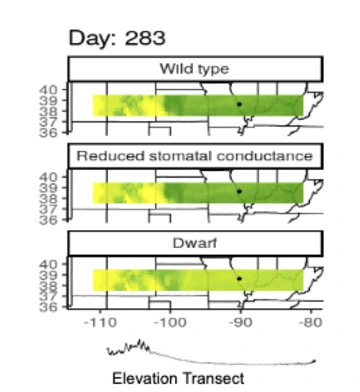The purpose of the Sentinel project is to design plants to sense and detect biological compounds.

The SENTINEL: SENsing Threats In Natural Environments using Ligand-receptor modules program aims to develop deployable plant systems to detect and report chemical and biological agents that pose threats to human health and agricultural production. Specifically, we will develop synthetic sense-and-response modules that report the presence of chemical and biological threats (e.g., explosives, nerve agents, dioxins, and plant pathogen metabolites). To achieve this, we will both co-opt existing plant receptor-signaling circuits as well as rewire endogenous plant signaling modules to function as orthogonal synthetic receptor-signaling complexes. Sensor modules will be genetically wired to regulate easily-measured outputs, including developmental traits (e.g., flowering, plant height) and physiological traits (e.g., leaf color, temperature, chlorophyll fluorescence). The student will be responsible for characterizing a ligand-receptor module at the biochemical level using a combination of in vitro and yeast in vivo measurements.
The CCT Data Science team supports this work by applying biophysical and ecological modeling to predict ecological and ecophysiological impacts of genetically modified sensor plants. We study how they will affect ecosystem level carbon and water balance as well as plant community dynamics using the BioCro, Ecosystem Demography (ED2) and Community Land Model (CLM) models.
Anderson CM, Mattoon EM, Zhang N, Becker E, McHargue W, Yang J, Patel D, Dautermann O, McAdam SAM, Tarin T, Pathak S, Avenson TJ, Berry J, Braud M, Niyogi KK, Wilson M, Nusinow DA, Vargas R, Czymmek KJ, Eveland AL, Zhang R. High light and temperature reduce photosynthetic efficiency through different mechanisms in the C4 model Setaria viridis. Commun Biol. 2021 Sep 16;4(1):1092. doi: 10.1038/s42003-021-02576-2. PMID: 34531541; PMCID: PMC8446033.

